In the world of sports, the significance of proper footwear cannot be overstated. The right shoes can make all the difference in an athlete’s performance. It adds the necessary support, stability, and grip to excel in their chosen sport.
Among the diverse range of sports footwear available, baseball cleats emerge as a specialized component of the baseball player’s arsenal. These cleats are not just ordinary shoes; they are designed to meet the unique demands of America’s favorite pastime, baseball.
Baseball, often referred to as the “national pastime” in the United States, is a sport that demands precision, agility, and speed. Players need to navigate a variety of terrains, from the grassy outfield to the gritty infield.
With lightning-quick movements they can decide the outcome of a game. This is where baseball cleats come into play. They are purpose-built to enhance a player’s performance by providing unparalleled traction, stability, and comfort on the field.
In this article, we will provide in-depth exploration of the remarkable world of baseball cleats. We will uncover the science behind their design, their role in optimizing performance for different positions on the field. Also covered will be features that make them indispensable for players at all levels of the game. Join us as we unravel how cleats elevate the game of baseball.
Contents
The Evolution Of Baseball Cleats
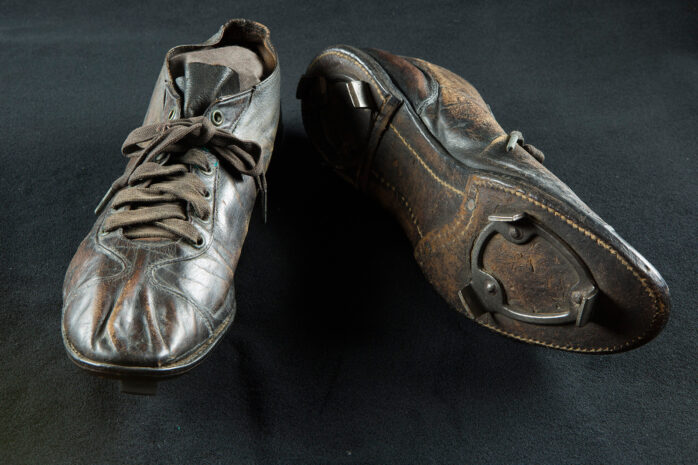
Before diving into the significance of cleats in today’s baseball, it’s essential to journey through their rich history, which dates back centuries. Cleats, renowned for their dual purpose of athlete protection and performance enhancement, extend far beyond baseball and have left their mark in various sports.
The roots of cleats trace back to ancient civilizations, notably in Greek and Roman times, where leather shoes equipped with spikes found their use in sports such as golf. The documented history of cleats in sports can be traced to the 1500s when King Henry VIII’s decree led to the creation of “football boots” adorned with studs for soccer.
It wasn’t until the 1860s that baseball saw its first encounter with football-style cleats. This marked the beginning of a practice towards refining cleats for baseball-specific motions. The initial baseball cleats featured detachable studs, a design that would see further innovations.
By the 1880s, cleats began to incorporate built-in studs, streamlining their design and functionality. As baseball playing surfaces evolved, so did cleats. Players sought shorter studs for artificial turf and longer ones for natural grass fields.
Nowadays the thought of a professional baseball player without cleats is just unprofessional. Cleats have become an integral part of the baseball uniform, a standard piece of equipment that continues to evolve. There are constant innovations, aiming to enhance player mobility, comfort, and safety, preserving the tradition while advancing the game of baseball worldwide.
If you want to know more about thousands and find out if the baseball cleats can be used for Football click here and find more about it.
Baseball Cleats- Inside & Out
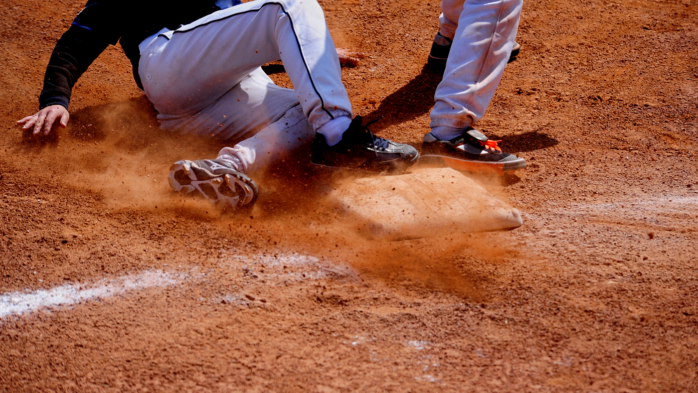
The Components
To truly understand how baseball cleats enhance a player’s performance, it’s essential to dissect their anatomy. A typical baseball cleat consists of three primary components:
- The Upper: This is the top part of the cleat, often made of synthetic materials or leather. It wraps around the foot, providing support, protection, and a secure fit. The upper’s design can vary, offering different levels of breathability and flexibility to cater to players’ preferences.
- The Sole: The sole of a baseball cleat is where much of the performance-enhancing magic happens. It typically features a midsole for cushioning and an outsole with receptacles for cleat studs. The sole’s thickness and composition can impact a player’s comfort and stability on the field.
- The Studs: Perhaps the most distinctive feature of baseball cleats is the studs or spikes on the outsole. These are strategically positioned to provide traction on the field’s surface. The configuration of studs can differ, with longer or shorter options designed for specific playing conditions and player positions.
Materials
The materials used in crafting baseball cleats are chosen for their durability, performance, and comfort. Common materials include:
- Leather: Often found in the upper, leather offers excellent durability and a snug fit once broken in. It provides a traditional and classic look preferred by many players.
- Synthetics: Synthetic materials are lighter, more breathable, and often easier to maintain than leather. They are commonly used in modern cleat designs, catering to players seeking a balance between performance and comfort.
- Rubber and TPU (Thermoplastic Polyurethane): These materials are frequently used in cleat outsoles due to their ability to provide grip and stability. The type and arrangement of studs can vary to suit different playing conditions.
Importance Of A Proper Fit
Achieving the optimal fit is a fundamental aspect of baseball cleat selection. Ill-fitting cleats can hinder a player’s performance and even lead to discomfort and injuries. Here’s why the proper fit is crucial:
- Enhanced Performance: A well-fitted cleat ensures that the foot is securely supported, minimizing the risk of slipping or twisting during play. This stability allows players to move confidently, make precise cuts, and maintain their balance.
- Comfort and Endurance: Comfort is key for enduring long games and practices. Cleats that fit snugly but not too tightly reduce the likelihood of blisters and discomfort, enabling players to stay focused on the game.
- Injury Prevention: Ill-fitting cleats can lead to injuries such as sprained ankles or stress fractures. Properly fitted cleats help reduce these risks and contribute to a player’s overall safety on the field.
Benefits Of Baseball Cleats
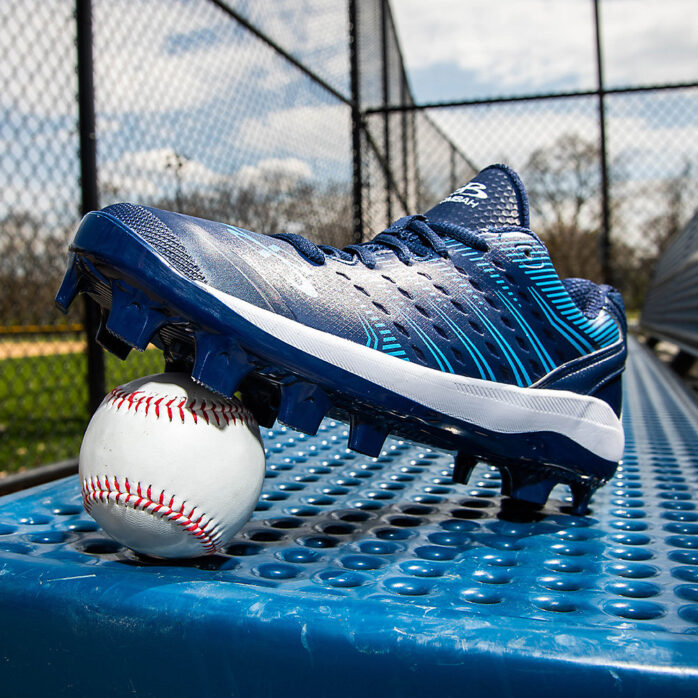
Traction is the linchpin of a baseball cleat’s performance and it’s the cleat studs that are responsible for this crucial aspect. These studs, strategically positioned on the cleat’s outsole, connect the player to the ground.
Cleat studs are designed with two primary functions in mind: grip and release. When a player moves, these studs dig into the ground, creating friction that prevents slipping. This is especially valuable during quick sprints, sudden stops, and rapid changes in direction on the field.
The shape, length, and arrangement of these studs are meticulously designed to adapt to various playing conditions. Longer studs are suited for wet or muddy fields, while shorter ones are preferred on dry, hard surfaces. This adaptability ensures that baseball players can maintain traction regardless of the terrain.
Traction
Traction is the bedrock of a baseball player’s ability to excel in every aspect of the game. Here are some key benefits:
- Running the Bases: When sprinting to a base, the ability to quickly accelerate and decelerate is crucial. Cleat studs grip the ground, allowing players to make sharp turns and maintain speed while rounding bases.
- Fielding: Infielders and outfielders rely on traction to chase down fly balls, make rapid pivots, and execute precise throws. The ability to start and stop swiftly can be the difference between a successful catch and a missed opportunity.
- Base Stealing: Base runners need explosive bursts of speed to steal bases successfully. Cleats provide the grip necessary to get a jump on the pitcher’s delivery and maintain momentum during the sprint to the next base.
Stability
Stability is intertwined with traction, and together, they form the foundation of a player’s stability on the field. Cleats enhance stability through:
- Preventing Slips: Cleat studs dig into the ground, reducing the risk of slipping on wet grass or muddy infields. This keeps players on their feet and in control, minimizing the potential for mishaps.
- Agility: Whether a player needs to pivot to make a throw or change direction while chasing a fly ball, cleats provide the stability needed to execute these movements with precision.
- Weight Distribution: Proper weight distribution across the foot is essential for maintaining balance. Cleats distribute pressure evenly, helping players stay upright even during dynamic plays.
Highlighting The Use Of Cleats In Different Positions
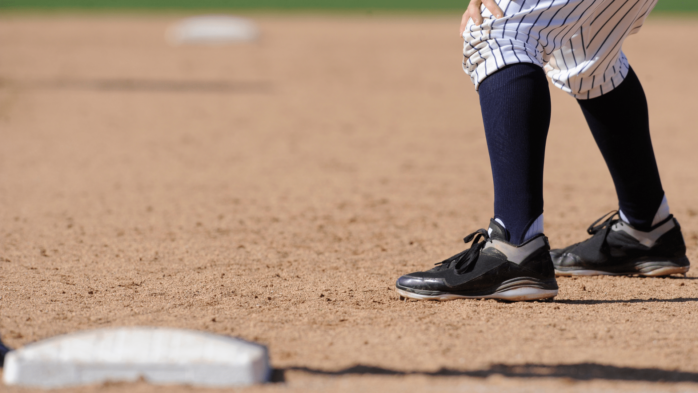
Cleats For Infielders
Infielders, often referred to as the “heart and soul” of a baseball team’s defense, require cleats designed with their specific needs in mind. These cleats typically feature distinct characteristics tailored to infield play.
For instance, they often have shorter studs that offer a lower profile compared to cleats designed for outfielders or pitchers. This design choice allows infielders to have maximum maneuverability and agility when fielding ground balls and making quick throws.
Infielders rely heavily on their cleats to gain an edge on the diamond. The benefits of specialized infield cleats include:
- Quick Starts: Infielders need to explode off the mark to reach ground balls swiftly. Shorter cleat studs provide a solid grip without excessive digging into the field, facilitating rapid acceleration.
- Precise Pivots: Turning on the balls of their feet is a common maneuver for infielders, especially when executing double plays. Cleats designed for infield play offer the necessary traction and stability for sharp pivots, ensuring accurate throws to bases.
- Lateral Movement: Infielders often need to make lateral movements to cover their assigned areas. The right cleat design enables them to glide laterally without compromising their stability.
Many renowned infielders have specific cleat preferences based on their playing style and field conditions. For instance, Derek Jeter, a legendary shortstop for the New York Yankees, was known for favoring cleats that prioritized lightweight design and responsiveness to excel in his demanding position.
Cleats for Pitchers
Pitchers have unique demands when it comes to cleat design. While traction remains essential, stability on the pitcher’s mound takes center stage. Cleats for pitchers often feature a well-balanced configuration that combines grip with a lower stud profile to ensure pitchers maintain their balance and control during the delivery.
Stability on the pitcher’s mound is non-negotiable for pitchers. Any loss of balance or slippage during the wind-up and release can result in erratic pitches and potential injuries. Pitcher-specific cleats provide the stability necessary to maintain proper form, maximize velocity, and achieve precision in pitching.
Examining the cleat preferences of famous pitchers sheds light on the significance of pitcher-specific footwear. Pitchers, like Clayton Kershaw, known for their pinpoint accuracy, often opt for cleats that prioritize stability and traction on the mound. Their choices reflect the critical role cleats play in a pitcher’s performance.
Durability and Longevity
Baseball cleats are constructed with durability in mind, recognizing the rigorous demands of the sport. Manufacturers use robust materials that can withstand the wear and tear of sliding, running, and abrupt stops. Reinforced stitching and quality craftsmanship ensure that cleats maintain their structural integrity, even during extended use throughout a baseball season.
While baseball cleats are built to last, players can take proactive steps to maximize their lifespan:
- Regular Cleaning: Removing dirt and mud after each game helps prevent premature wear. A soft brush and warm, soapy water can be used to gently clean the upper and outsole.
- Proper Storage: Storing cleats in a cool, dry place away from direct sunlight and extreme temperatures can prevent the deterioration of materials.
- Rotation: Having multiple pairs of cleats and rotating them can distribute the workload and reduce the strain on a single pair.
Investing in quality cleats is an economically sound decision for serious baseball players. While high-quality cleats may have a higher initial cost, their durability and performance benefits can save money in the long run. Players can avoid frequent replacements and potential medical bills associated with injuries caused by inadequate footwear.
Support and Comfort
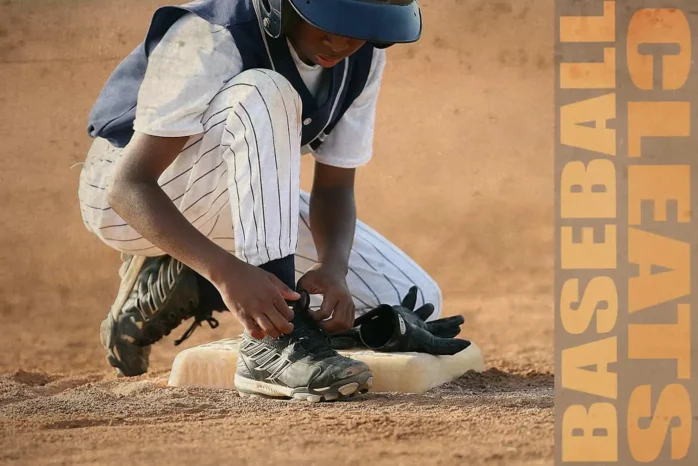
Beyond traction and durability, baseball cleats often incorporate features that enhance player comfort and safety. These features may include:
- Ankle Support: Some cleats have built-in ankle support features, such as padded collars or straps, to reduce the risk of ankle injuries.
- Cushioning: Insoles with cushioning provide added comfort during extended periods of play, reducing the strain on a player’s feet.
- Reduced Fatigue: Enhanced cushioning and support reduce the impact on the player’s feet and lower limbs, minimizing fatigue during long games or practices.
- Injury Prevention: Features like ankle support can help prevent common baseball injuries, such as sprains, by providing stability and protection.
Finding the right balance between support and flexibility is crucial in cleat design. Cleats should provide the necessary support without sacrificing the player’s ability to move freely and make quick, agile movements on the field. Achieving this equilibrium ensures that players can perform at their best while staying comfortable and safe.
Why Do Need To Maintain and Cleaning Cleats Regularly
To extend the life of baseball cleats, you should adopt proper care routines, including:
- Immediate Cleaning: Removing dirt and mud promptly after each game prevents buildup that can damage materials.
- Drying: Allowing cleats to dry naturally after cleaning helps prevent mold and odor.
- Storing Cleats: During the offseason or periods of inactivity, storing cleats in a breathable bag or box in a cool, dry location ensures they remain in good condition until the next season.
Recognizing when it’s time to replace cleats is crucial for maintaining peak performance and safety. When cleats show signs of extensive wear, loss of traction, or damage that compromises their structure, it’s advisable to invest in a new pair to continue playing at your best.
Conclusion
Baseball players opt for cleats designed exclusively for the sport. This specialized athletic footwear offers unparalleled support and performance. They are tailored to the precise actions and maneuvers essential in the game of baseball. It also serves as the ultimate cornerstone for players at any skill level.
If you play baseball on the regular, embracing some variant of baseball cleats, if feasible, helps in the long run. These shoes are carefully engineered to deliver peak performance and serve as the optimal choice for the sport. While other cleat types may suffice for those engaging in baseball recreationally, individuals with a genuine commitment to the game should prioritize the use of dedicated baseball cleats.
















